
Worker Bees the Busy Bees
by WibMagli
See a honey bee flying from flower to flower, it's a worker bee. She is in the last stage of her life.
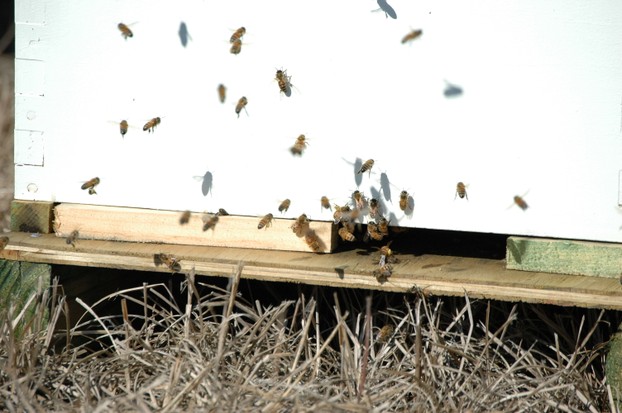 Workers Going To and From a Hive Jennifer Magli |
We often hear the phrase “busy as a bee” used to describe someone who is hard at work, moving from one task to another without stopping. It’s an appropriate description; a beehive is frenetic with activity. The busiest bees in the hive are arguably the worker bees.
A honey bee colony is composed of three types of bees, or castes: the queen, the workers, and the drones. Of the three castes, the workers are by far the most numerous. There can be 40,000 or more workers in a healthy colony, while there is only one queen and, depending on the time of year, zero to several hundred drones.
The bees that you see flying from one flower to another are worker bees. Of the three types of bees in a honeybee colony, unless you are a beekeeper, the workers are the only ones that you are ever likely to see. The queen spends all her time inside the hive laying eggs, while the drones spend most of their time outside the hive, up in the air, looking for virgin queens with which to mate.
Except For Reproduction, Worker Bees Do All the Work
With the exception of reproduction, worker bees carry out all of the essential functions that enable the hive to survive. They clean the hive; feed the larvae; guard the hive; gather pollen, nectar, and water; seal cracks in the hive; regulate the temperature in the hive; feed the queen and the drones; and build the honey comb.
All worker bees are female and develop from fertilized eggs, in contrast to drones which develop from unfertilized eggs (that’s not a typo, it’s called parthenogenesis). The worker bees are also all at least half-sisters, because the queen mates with more than one drone, they are not all full-sisters.
Workers live approximately six weeks in the summer and up to several months in the winter. Workers that develop from eggs laid in the late summer and fall, called “winter bees” are physiologically different from their summertime sisters. Winter bees have enlarged fat bodies with higher levels of vitellogenin, a substance closely related to egg yolk, than summer bees. A fat body, by the way, is the name of a particular organ, not a description of an obese bee.
The task performed by a worker bee depends primarily on the age of the bee. Workers begin life performing tasks inside the hive and end their lives foraging outside the hive. Each bee moves from one task to the next as it ages.
Workers start their lives as nest cleaners. Between the ages of 3-16 days they perform as nurse bees, feeding developing larvae and the queen. As the workers continue to age, they move through a series of tasks until at approximately 21 days old they become foragers. Foraging is the last and most demanding task that the worker will perform. Risks abound outside the hive; there are many predators that enjoy a honey bee snack. Wear and tear also takes its toll; the older workers remain foragers until they die, having worked themselves to death.
This age to task relationship isn’t rigid, but adapts to the needs of the colony. For instance, if a colony needs more foragers, then workers will become foragers earlier then they would otherwise.
A Worker That Stings Pays a High Price
Besides honey, the thing that honey bees are most well known for is their sting. Worker bees are the only bees in the colony that will sting. The queen can sting, but reserves this ability for other queens that she might find in her colony. This is one of the reasons that there is only one queen in each colony. Drones are not able to sting at all.
Workers only sting to defend their hive. Many people are terrified of any bee that they see, but bees far from the hive, usually foraging, have nothing to defend. They won’t sting unless stepped on, caught in someone’s hair, or placed in some other situation from which they cannot escape. One of the reasons that honey bees are reluctant to sting, except for good reason, is that they die in the process. The stinger of a worker bee, in contrast to that of a queen, is barbed and lodges in the skin of the bee’s target; when the bee pulls away the stinger is left behind, rupturing the bee’s abdomen causing its death.
Give Her a Bow; She Is Near the End
So the next time that you see a honey bee flying from flower to flower, you will know that it’s a worker bee, a female, and that it is one of the older bees in the colony. You will also know that it has already spent its life performing many tasks like cleaning the nest and feeding the queen. She will be on her last task then, foraging, and she will stay at it, a busy bee, until she dies.
 | The Beekeeper's Handbook, Fourth Edition From the foreword Beginners will find The Beekeeper s Handbook a joy, and more seasoned beekeepers will find rereading of benefit as they continue to master the art and ... |
 | The ABC & XYZ of Bee Culture: An Encyclopedia Pertaining to the Scientific and Practical ... The 41st Edition of The ABC & XYZ Of Bee Culture has over 900 pages and more than 1,000 photos. Most photos are color, but many are black and white because of the extensive ... |
 | The Buzz about Bees: Biology of a Superorganism With spectacularly beautiful colour photographs and an easy understandable text The Buzz about Bees tells the story of honeybees in a new perspective. Based on the latest ... |
You might also like
The Wild Herds of BritainBritain has been a well-farmed land for many years, but there are still wild ...
How to Cure a Wound in a DuckHave you ever heard of sugardine for wounds? It’s used a lot for horses but i...
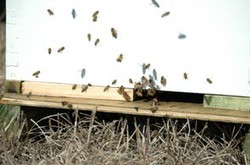

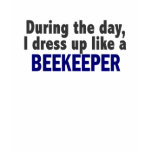
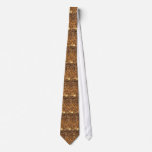



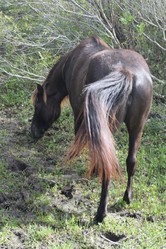

Comments
dak,
Thank you for reading it.
Thank You for this informative article